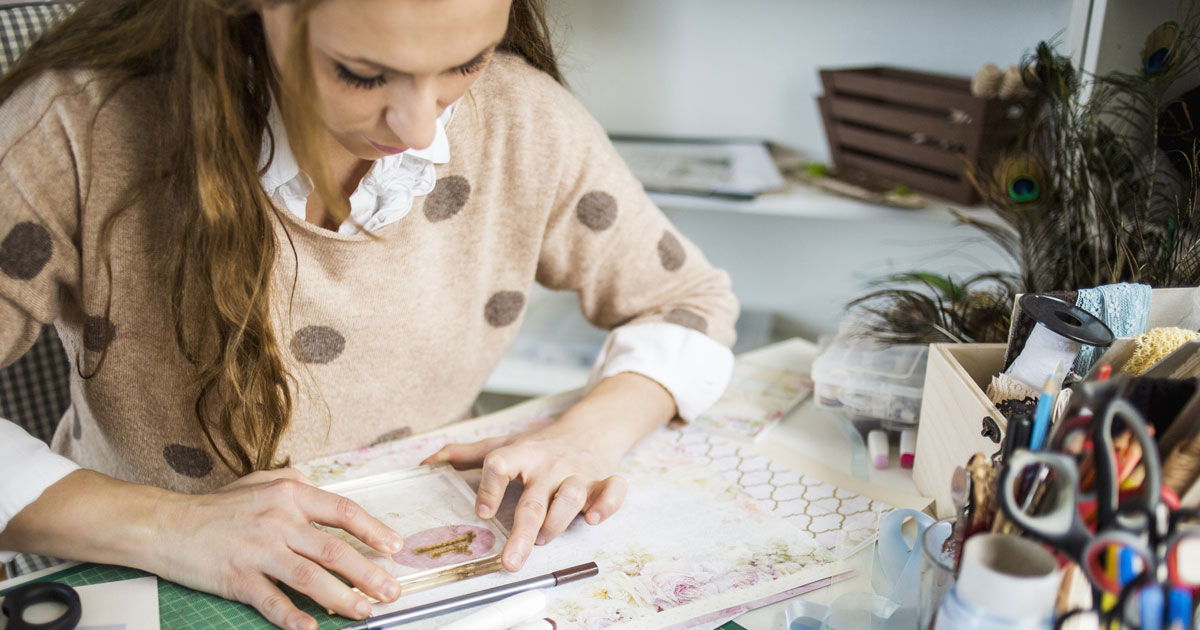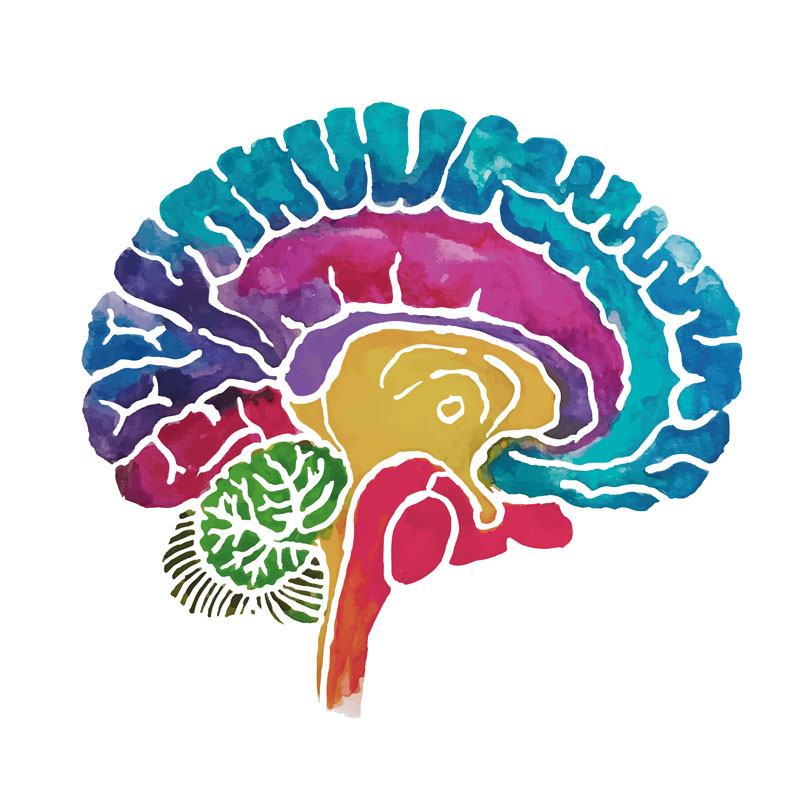Art therapy is the therapeutic use of art to improve and enhance a person’s physical, mental, and emotional well-being. It combines the creative process with psychotherapeutic techniques to improve mental health, reduce stress and promote overall wellness. Art therapy is a form of creative expression that allows people to explore their feelings, thoughts, and emotions in a safe and non-judgmental environment.
It’s important to understand that mental health issues can impact our lives in many ways. For example, stress caused by work or family problems can lead to physical health problems such as high blood pressure, heart disease, and headaches. Additionally, mental health issues can cause us to have difficulty functioning in our everyday lives, such as going to school or work.
And these issues can also lead us down a path of negative feelings and thoughts about ourselves, which can lead to depression and anxiety. It’s why it’s important to find ways to manage our mental health issues, like art therapy, and seek professional help whenever necessary to keep us living our best lives.
The Benefits of Art Therapy

Art therapy has many benefits for mental health, including:
Stress Relief
Art therapy is an effective way to reduce stress and negative emotions. It can help you escape from everyday worries by giving your mind a break from thinking and focusing on your physical sensations while creating art.
Increased Self-Esteem
Art therapy can help build confidence and boost self-esteem by allowing you to explore your creative side and see the results of your efforts.
Improved Communication
Art therapy can help improve communication by providing a non-verbal way to express yourself and connect with others through art.
Coping Skills
Art therapy can help develop coping skills for dealing with stress, anxiety, and depression. It can also help you deal with difficult emotions and memories in a healthy way.
Creativity
Art therapy can help unleash your creative side and discover new ways to express yourself.
Reduced Anxiety and Depression
Art therapy has been shown to be an effective treatment for anxiety and depression. It can help reduce symptoms such as agitation, anxiety, and rumination for those with these conditions.
Relaxation
Art therapy can be a relaxing experience, especially for people who are stressed out or have trouble sleeping. It can also help you feel more grounded and centered during times of stress.
Improved Mood
Art therapy can improve your mood by providing a sense of satisfaction and pleasure during the creative process.
Increased Energy
Art therapy can increase your energy levels and help you feel more alert and focused by engaging both the body and mind.
Enhanced Self-Awareness
Art therapy can help you become more aware of your thoughts, feelings, and emotions. It can also help you understand yourself better and gain insight into your strengths, weaknesses, and areas for growth. As you can see, this vast list of mental health benefits from art therapy sheds a strong light on why this form of therapy should be used more often. It is an excellent alternative treatment for many mental health issues and can help people cope with stress, anxiety, depression, and much more.
Who Can Enjoy the Benefits of Art Therapy?
Art therapy can be beneficial for anyone who wants to explore their creative side or improve their mental health. It is particularly useful for people who have difficulty communicating verbally, such as children and those with speech impediments. It can also be helpful for people who have experienced trauma or abuse, as it provides a safe and healing environment to express themselves.
Art therapy is also useful for people who are struggling with anxiety, depression, stress, or any other mental health issue. It can help them to explore their feelings and emotions, develop coping skills, and improve their mood. If you are considering art therapy, please consult a mental health professional to see if it is the right treatment for you.
How to Get Started with Art Therapy at Home

If you are interested in trying art therapy at home, consider art-as-therapy or therapeutic art. Both are options you can try on your own or, in support of professional therapy, and offer a great way to relieve stress and learn new coping skills.
Here are some art-as-therapy ideas you can try:
Drawing a Picture of a Happy Memory
You are encouraged to reflect on happy moments when life was easier and when you felt more content. This can be a helpful way of reframing your current situation and reminding yourself that things can get better. Sometimes it can be more helpful to draw a picture of this memory to externalize it and make it more concrete. This has the power to shift your focus from the negative aspects of your life and can be very therapeutic.
Painting a Picture of Your Worries
It can be very therapeutic to express your worries and fears through art. This can be a way of releasing them and of understanding them better. By putting your worries down on paper, you can often better see how irrational or exaggerated they may be. This can help you to deal with them in a more rational way.
Making a Collage of Your Hopes and Dreams
This is a way of looking to the future and setting your sights on what you want to achieve. The process of deciding what to include in the collage can be very revealing and can help you to focus on what is truly important. The end product can serve as a reminder of your goals and can be a source of inspiration and motivation.
Performing a Song or Dance
This is a fun way of expressing yourself and can be very cathartic. It can help you to let go of your inhibitions and feel more comfortable in your own skin. It can also be a great way of bonding with others and forming a healthy outlet for your emotions.
Make a Creative List of Things You Are Grateful for
This is a great way of reminding yourself of the good things in your life, even when times are tough. It can help you to focus on what is important and to keep things in perspective. It can also be a source of inspiration and motivation, as you can see how far you have come and what you have to be thankful for.
Leveraging any and all art forms to create something that is uniquely yours can have a profound impact on your mental health and wellbeing. It can be a powerful tool for self-expression and for making positive changes in your life. Art-as-therapy is an approach that is increasingly being recognized and used by mental health professionals as a valuable treatment option with results.
What Type of Art Could You Participate in With Art Therapy?
There are many different types of art that you could participate in with art therapy. This includes:
Drawing
Drawing is a simple and easy way to get started with art. You can draw anything that comes to mind, from objects to landscapes to people with the use of pencils, pens, or markers.
Painting
Paining is a form of meditation and release. Brushing various colors onto a canvas can be a very relaxing experience. You can paint landscapes, abstract art, people, or anything that you desire.
Sculpture
Sculpting is a great way to express yourself and create something that can be shared with others. You could sculpt anything from clay, metal, or wood.
Textiles
Textile art is a great way to be creative and experiment with different fabrics and materials. You could make quilts, pillows, wall art, or any other type of textile art.
Collages
A collage is a great way to combine different materials and create something unique. You could use photos, magazines, fabrics, or any other type of material.
Coloring Books
Traditional or adult coloring books are a great way to relax and de-stress. You can color in any design that you like or make your own.
Fabrics
You can make clothing, pillows, quilts, or any other type of fabric art to express yourself.
Photography
Photography is a great way to capture moments and memories in time. You can take photos of anything that you like, from nature to people.
Jewelry
You can create your own jewelry by using beads, wire, and other materials. This is a great way to be creative and make something that is wearable.
Music and Performing Arts
The power of music and performing arts can be very therapeutic due to the emotional connection that it can create. You could participate in singing, playing an instrument, or acting in a play. This is a great way to utilize art as a form of self-expression that can be shared with others and heal at the same time.
These are simply a few examples of the types of art that you could participate in with art therapy. There are many other options available, so be sure to explore and find something that you enjoy.
 Can Art Reduce Stress?
Can Art Reduce Stress?
We all know that the mind and body are not separate entities. If you’re physically stressed or in pain, your mental health will also suffer. The reverse is also true. If you are depressed, anxious, or under emotional stress, it will also affect your physical well-being. This is where various types of art can come in as a form of therapy. A recent study has shown the direct impact patients who engage in creative outlets have on their dopamine levels.
Dopamine is a neurotransmitter that is responsible for happiness, pleasure, and motivation. Low levels of dopamine are associated with depression, anxiety, and stress. With this logic, engaging in creative activities can increase your dopamine levels and improve your mood.
Making Art-for-Therapy a Group Activity
Art-for-therapy can also be a great group activity. This is a great way to get to know other people who are interested in art, and it can also be a fun way to share ideas and experiences.
To get started:
- Find a group of people that you want to do art-for-therapy with. This could be family, friends, coworkers, or anyone else who is interested in expressive art.
- Decide on a type of art that you want to do together. This could be drawing, painting, sculpting, textiles, collages, music, performance, etc.
- Get together, pick up your supplies and start creating! Be sure to share your art with each other and discuss the process and what you’re creating.
- While engaging in your art together, consider opening up about why you’re doing art-for-therapy and what you hope to get out of it. Doing this can help make the experience more beneficial for everyone involved by validating each other’s experiences and feelings. It can also help build a stronger bond with the people doing art-for-therapy with you.
- Participating in group art-for-therapy truly holds the power to help reduce stress and anxiety in your life. By doing it with others, you can enjoy the benefits of therapeutic art practices while also building stronger relationships with the people around you.
The Benefits of Art Therapy Find All Kinds of Artists

The next time you feel overwhelmed or stressed, why not turn to art as a form of therapy? As you can see, there are many different types of art that you can try, so find one that sounds interesting to you and get started. This therapeutic self-care tool can be done by anyone, anywhere with just a few basic tools. Sometimes all I need to process my thoughts is a pen and paper.
Knowing that art can help relieve stress and also improve your mental health in other ways as well makes it at least worth trying. Visit our Art Corner and find that art is more than therapeutic, but a hobby or even a marketable skill!
Sources
- Avison, W., & Gotlib, I. H. (Eds.). (1994). Stress and mental health: Contemporary issues and prospects for the future. Springer Science & Business Media. https://doi.org/10.1007/978-1-4899-1106-3
- Heenan, D. (2006). Art as therapy: an effective way of promoting positive mental health? Disability & Society, 21(2), 179-191. https://doi.org/10.1080/09687590500498143
- Lee, J. H. (2021). Effectiveness of group art therapy for mothers of children with disabilities. The Arts in Psychotherapy, 73, 101754. 5. Federica D’Andrea, Victoria Tischler. (2020) “It inspires me and suddenly the ideas come”: exploring the use of cultural venues in mental health care. Arts & Health 0:0, pages 1-17. https://doi.org/10.1016/j.aip.2020.101754
- Zaidel D. W. (2014). Creativity, brain, and art: biological and neurological considerations. Frontiers in human neuroscience, 8, 389. https://doi.org/10.3389/fnhum.2014.00389
Jenny Weatherall is the co-owner and CEO of Eminent SEO, a design and marketing agency founded in 2009. She has worked in the industry since 2005, when she fell in love with digital marketing… and her now husband and partner, Chris. Together they have 6 children and 3 granddaughters.
Jenny has a passion for learning and sharing what she learns. She has researched, written and published hundreds of articles on a wide variety of topics, including: SEO, design, marketing, ethics, business management, sustainability, inclusion, behavioral health, wellness and work-life balance.

 Can Art Reduce Stress?
Can Art Reduce Stress?
